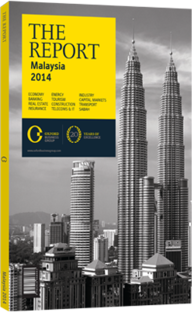Evolving long term: With LTE getting off the ground, players are scrambling for a share
Since early 2013, 4G long-term evolution (LTE) has been available in Malaysia. After a successful auction of the relevant spectrum, the major carriers almost immediately started offering the ultra high-speed wireless connection. However, though successful, the rollout has also been choppy. Different strategies, legacy technologies, high costs and the simple fact that most subscribers in the country are happy with 3G have all made the introduction more of a phased event than a big bang. LTE will be the leading technology at some point, but the process will involve a period of transition. In December 2012 nine companies in Malaysia were awarded spectrum at 2.6 GHz for LTE. The winners were existing operators Celcom Axiata, DiGi, Maxis and U Mobile; WiMAX providers AMAX, Packet One Network, RED tone and YTL Communications; and a new name in the sector, Puncak Semangat. Most began offering LTE in 2013, with the rest set to offer the service in 2014.
1.8 GHZ
Despite the auction, a number of firms have decided to offer LTE service at 1.8 GHz. That spectrum requires fewer base stations and offers better indoor quality. It also works with more of the handsets currently available in the market. In early 2013 Maxis received permission to utilise 1.8 GHz for LTE. Local press have indicated that both DiGi and Celcom Axiata have also considered that spectrum for LTE.
The roll-out of LTE services was at first fairly limited. Geographically, 4G signals could be received in only a few areas in the country. U Mobile initially made its service available in Subang Jaya, Sunway, Puchong, Berjaya Times Square and Taman Molek Johor Baru. DiGi’s service was also quite sparse and was available only in Klang Valley’s Plaza Low Yat, 1 Utama Shopping Centre, Kota Damansara, Subang Indah Villa, Sunway Mentari, Bukit Bintang, the KDU neighbourhood and Cheras Pandan Indah. Some concerns were also raised about the packages that were being offered, and users in late 2013 commented online that the plans were confusing. Maxis users, for example, could keep their SIM card, while Celcom users were required to change their cards.
More Towers, Cheap Cards
However, providers are quickly ramping up their offerings and fast investing in the necessary technology, and the prospects for the sector are quite good. Celcom Axiata plans on having 1200 LTE sites up and running by mid-2014, up from the 700 as of March 2014. DiGi said it would be expanding the number of LTE sites to 1500 in 2014. In January 2014 Maxis started selling pre-paid LTE SIM cards. The cards cost RM8.80 ($2.75), and data transfer was being offered for RM30 ($9.36) for 1 GB per month or RM68 ($21.22) for 3 GB.
A number of major transactions have occurred that suggest that the larger players will be quite active and that significant investment will be made in LTE. In March 2014 Telekom Malaysia (TM) purchased 57% of Packet One for RM350m ($109.23m). It is also buying RM210m ($65.54m) in bonds for Green Packet, a Packet One shareholder. The bonds are convertible in the future into shares of Packet One. WiMAX provider YTL Communications’ Yes is also going with LTE. The company was conducting LTE trials in early 2014 on both the 2.6 GHz and 2.3 GHz spectrums, according to the local press. The company announced in 2013 that it would have an LTE offering in 2014, though it also said it would continue to make WiMAX available.
Altel & Celcom
Puncak Semangat’s Altel unit, which won spectrum in the auction, agreed in 2013 to combine forces with Celcom in rolling out and developing LTE services. Puncak Semangat received a total of 40 MHz in the auction despite having little experience in the sector. There was some concern expressed in the local press about awarding so much spectrum to a relative newcomer, but the regulator indicated that the award was made to keep the sector competitive.
With so many companies chasing customers, and most firms still having only 20 MHz of spectrum, more consolidations are almost certainly going to occur. Given the global trend of pricing 4G the same as 3G, despite its higher costs, Malaysian firms will need to be large and well capitalised in order to compete.
You have reached the limit of premium articles you can view for free.
Choose from the options below to purchase print or digital editions of our Reports. You can also purchase a website subscription giving you unlimited access to all of our Reports online for 12 months.
If you have already purchased this Report or have a website subscription, please login to continue.

